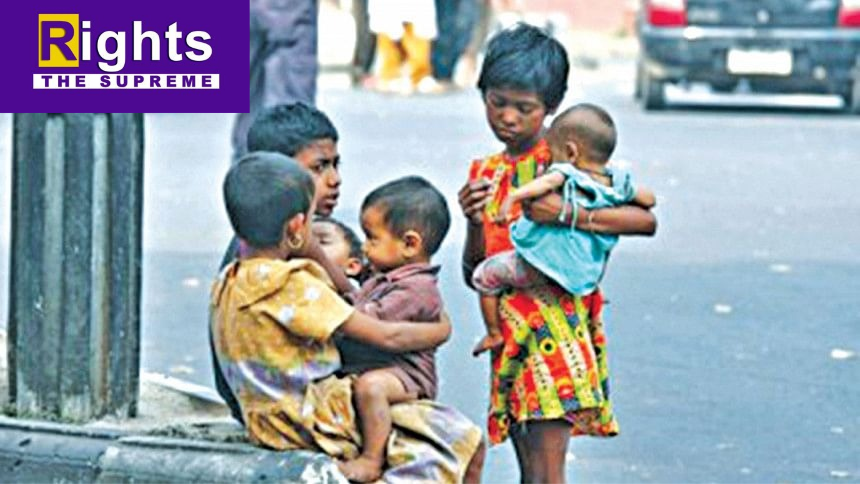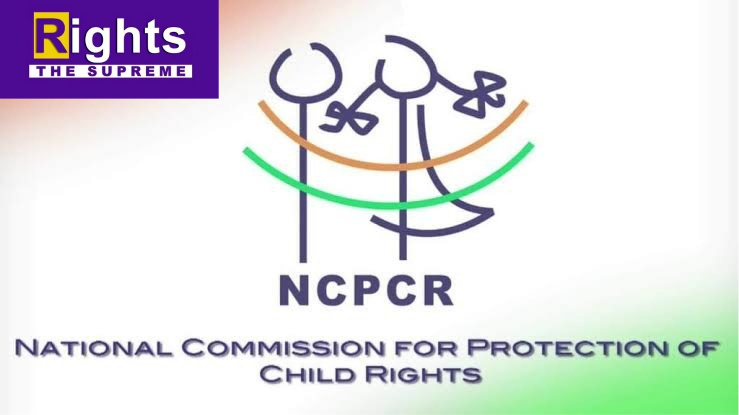The National Commission for Protection of Child Rights (NCPCR) is a statutory body established in 2007 under the Commission for Protection of Child Rights (CPCR) Act, 2005 in India. It functions under the Ministry of Women and Child Development and is dedicated to protecting and promoting the rights of children, ensuring their well-being as per the United Nations Convention on the Rights of the Child (UNCRC). The NCPCR is tasked with examining safeguards provided under laws and policies for children, recommending measures for their effective implementation, and inquiring into violations of child rights. It also monitors the functioning of institutions related to children, including those involved in education, health, and juvenile justice. Additionally, the commission has the authority to intervene in court proceedings concerning child rights violations. Key areas of focus include child labor, education, juvenile justice, child trafficking, health, and nutrition. The commission works with State governments, NGOs, and international organizations to strengthen child protection mechanisms. Through its initiatives, the NCPCR ensures that children's rights are upheld and that they receive proper care, protection, and opportunities for development. The commission plays a crucial role in policy advocacy, monitoring, and intervention to create a safe and supportive environment for children across India
INTRODUCTION
The National Commission for Protection of Child Rights (NCPCR) is a statutory body of Government of India. It was set up in March 2007 under the Commissions for Protection of Child Rights (CPCR) Act, 2005, an Act of Parliament (December 2005). The Commission's mandate is to ensure that all laws, policies, programmes, and administrative mechanisms are in consonance with the child rights perspective, as enshrined in the Constitution of India and also the United Nations Convention on the Rights of the Child (UNCRC). India has the largest child population in the world. Well-being of children is a universal aspiration. The Commission is committed to reach out to the last child to address the violations he/she is facing and alleviate his/her status from vulnerability to a secured societal environment through complaint redressal mechanism, policy intervention, regulatory intervention, programme activity, special investigation, recommendation and studies. The Commission, through various interventions and interactions, is aware of the fact that children are found in street situations in almost all the cities and towns of the country. A life on the street constitutes one of the most serious violations of the rights of children—violating their right to education, good health, nutritious food, play, protection and proper development. These children are a subset of vulnerable and working children, a major category that comes under children in need of care and protection (CNCP),defined under the Juvenile Justice (Care and Protection of Children) Act, 2015 (hereafter, JJ Act). Several provisions have been provided, especially under the Constitution of India, UNCRC, the National Plan of Action for Children (NPAC), 2016 and CPCR Act, 2005,that are applicable for the “rehabilitation” of children in street situations (CiSS)
CONSTITUTIONAL PROVISION
Constitutional provisions for children, provided under the Constitution of India, are affected/contravened when a child is found in street situations. These provisions are as follows:
1. Article 14: The State shall not deny to any person equality before the law or the equal protection of the laws within the territory of India.
2. Article 15(3): Nothing in this article shall prevent the State from making any special provision for women and children.
3. Article 21: No person shall be deprived of his life or personal liberty except according to procedure established by law.
4. Article 21(A): The State shall provide free and compulsory education to all children of the age of six to fourteen years in such manner as the State may, by law, determine.
5. Article 23(1): Traffic in human beings and beggary and other similar forms of forced labour are prohibited and any contravention of this provision shall be an offence punishable in accordance with law.
6. Article 24: No child below the age of fourteen years shall be employed to work in any factory or mine or engaged in any other hazardous employment.
7. Article 38(1): The State shall strive to promote the welfare of the people by securing and protecting as effectively as it may a social order in which justice, social, economic and political, shall inform all theinstitutions of the national life.
8. Article 39: The State shall, in particular, direct its policy towards securing;
(e) The tender age of children are not abused and that citizens are not forced by economic necessity to enter avocations unsuited to their age or strength.
(f) Children are given opportunities and facilities to develop in a healthy manner and in conditions of freedom and dignity and that childhood and youth are protected against exploitation and against moral and material abandonment.
10. Article 45 :The State shall endeavour to provide early childhood care and education for all children until they complete the age of six years.".
ISSUES AND CONCERNS
A rapidly urbanizing India requires continuous understanding of the issues related to CiSS to ensure that no child lives in abject poverty or at the margins of society. The CiSS are often described as “hidden” or “invisible” due to lack of identity, recognition or social status that can make them count. All CiSS, whether living with or without parents, are extremely vulnerable to crimes of sexual abuse. All kinds of violence take place on the street and the perpetrator could be an adult or even another street child in conflict with law (under 18 years of age).
Education is an important part in the life of children for their development; however, education is missing in the lives of CiSS. They are out of school and spend most of their time working in inhuman environment. In fact, despite the constitutional guarantee of education under the RTE Act that states every child below the age of 14 years has to be enrolled in formal school education, children continue to be out of school. The fact of the matter is that if children are enrolled and attending a school, they can be protected more effectively. Crime against children is also an indicator of the state of children.
It is pertinent to highlight the data captured by National Crime Records Bureau (NCRB). The 2018 report of NCRB says that in percentage terms, major crime heads under “Crime against Children” during 2018 were kidnapping and abduction (44.2%); and cases under the Protection of Children from Sexual Offences (POCSO) Act, 2012 were 34.7%, including child rape. The crime rate per lakh children population was 31.8% in 2018 in comparison to28.9% in 2017. It indicates that the rate of crime against children is increasing day by day, which is indeed a serious concern. Apart from crime against children, the issue of missing children is another indicator for deteriorating state of affairs pertaining to children.
It was observed that the proportion of older girls (those in 16–18 years age group) in the street child population is comparatively low as per the data collected by Save the Children, which suggests that various factors drive girls out of streets as they grow older. It could be child marriage, trafficking or entry into the brothels. However, there is a need to conduct an in-depth study on this.
Big metropolitan cities have a higher presence of CiSS who have migrated from other States, whereas in the smaller cities, CiSS are mostly from the same State. Search for employment, slum displacement and poverty of the household are important triggers for migration of children to the city. Meanwhile, some of the reasons why a child leaves the house are: “family breakdown, divorce, step parenting, domestic violence, beating, rebuke, lack of community support, breakdown of support networks, lack of parental education about child care and development, conflict in family and stress management skills by the parents; assorted family problems including abuse, desire for consumer goods, the lure of the city”, etc., leading the child to the streets. Rag-picking is the most commonly cited livelihood option of CiSS.
Other survival strategies are begging, hawking/street vending and working at roadside stalls. Most street-connected children have to work daily. Long working hours, drudgery and exhaustion are the reasons for these children to get attracted to drugs. A substantial proportion of the children spend a part of their earnings on drugs and intoxicants. Being on the street also gives them easy access to drugs, alcohol and tobacco, hence substance abuse is a major problem that these children are prone to.
According to a study conducted by the NCPCR with National Drug Dependence Treatment Centre, the common drugs of use among children and adolescents are tobacco and alcohol, followed by inhalants and cannabis. The mean age of onset was lowest for tobacco (12.3 years), followed by onset of inhalants (12.4 years), cannabis (13.4 years) and alcohol (13.6 years), proceeding to the use of harder substances—opium, pharmaceutical opioids, heroin (14.3–14.9 years)—and other substances through injecting route (15.1 years). In another study, 46.36% of slum-dwelling adolescents used both smokeless and smoking tobacco, in addition to alcohol and cannabis, and started using drugs during their childhood itself. Further, a study brought out by the ASSOCHAM Ladies League on “Situational Analysis of Street Children in Metro Cities”, covering 2,000 children, reveals that children in metros are victims of one or other substance use, including inhalants (35%), alcohol (12%), cannabis (16%), chewing tobacco and gutka (16%) and smoking (21%). Injury and illness are common among the street-connected children. Diarrhoea/loose motions, viral fever and food poisoning are common illnesses that are caused and aggravated by consumption of unsafe drinking water, lack of personal hygiene and open defecation.
Most CiSS depend on public sources of water. This includes tap water, hand pumps, wells and water sources at parks, bus stands and railway stations. The CiSS are often more vulnerable to sexual and reproductive health problems, sexually transmitted diseases, HIV/AIDS, unwanted pregnancies and unsafe abortions. It has been seen that sexual and reproductive health problems affect both girls and boys. In addition, the CiSS have a number of psychological problems due to insecurity, and continued anxiety, violation and maladjusted behaviour throughout their lives. Most of the street-connected children are vulnerable to emotional, physical and sexual abuse due to lack of secure shelter and adult care. It has often been seen that because of a lack of permanent shelter and the fact that the number of CiSS is not recorded in any national survey, they are often called the “hidden children”.
Most of the children do not have any identification document, such as birth certificates, and other caste-related or family income certificates, which is the biggest hindrance for children and families in availing benefits of education and other social welfare schemes. Moreover, there is a lack of comprehensive data and evidence due to lack of research studies, mapping and survey of CiSS. While focus is on children living with family, a specific reference can be made to “children without parental care” or children who are outside the net of family safety.
The NPAC, 2016, of the Ministry of Women and Child Development (MoWCD), takes into account the current priorities for children in India. The focus of the NPAC is to reach and serve to the “Last Child First”, as they are most vulnerable due to gender, socio-cultural and economic or geographic exclusion, including other vulnerable children, such as CiSS, children of migrant workers, children of sex workers and those suffering from HIV/AIDS or other diseases.
The CPCR Act, 2005provides for the NCPCR and State Commissions for Protection of Child Rights (SCPCRs) and children’s courts for providing speedy trial of offences against children, or of violation of child rights, and for matters connected therewith or incidental thereto. The Commission, under Section 13 of the CPCR Act, has been provided to perform the duties, such as look into matters relating to children in need of special care and protection, including children in distress, marginalized and disadvantaged children, children in conflict with law, juveniles, children without families and children of prisoners, and recommend appropriate remedial measures.

WHAT IS CiSS?
CiSS stands for Children in Street Situation, The term “street child”, used by the Commission on Human Rights in 1994, was developed in the 1980s to describe “any girl or boy…for whom the street (in the broadest sense of the word, including unoccupied dwellings, wasteland, etc.) has become his or her habitual abode and/or source of livelihood, and who is inadequately protected, supervised or directed by responsible adults.” At that time, “street children” were categorized as: children on the street, who worked on the street and went home to their families at night; children of the street, who lived on the street, were functionally without family support but maintained family links; or abandoned children who lived completely on their own. The terminology has continued to evolve to recognize children as social actors whose lives are not circumscribed by the street. Human Rights Council Resolution 16/12 refers to children working and/or living on the street, and the Committee on the Rights of the Child has adopted the term “CiSS”, recognizing that children engage in numerous activities on the street and that if there is a “problem”, it is not the child but rather the situations in which s/he finds her/himself.
The JJ Act, 2015, under Section 2(14), has defined children who are in need of care and protection. Therefore, being the principal act governing CNCP, the definitions given in JJ Act, 2015 are being used as working definitions in this SOP.
Ciss may be categorised in three broad types:
1. Children without support living on the streets all alone: These are children without any parental anchor or family support system living on the streets, pavements or any public places on their own. For them, street is the home. Examples are missing, runaway, abandoned and orphan children. Some of these children may be voluntarily not in contact with family; in other words, these children do not keep contact with parent(s), siblings, relatives or guardians, irrespective of whether they know their whereabouts. They survive on streets by working, begging, selling items/goods, performing on streets or adopting any other means.
2. Children stay on the streets in the day and are back home in the night with their families who reside in a nearby slum/hutments: These are children who spend their time on street, loitering in the day time. However, they go home during the night to be with their parents who live in a nearby slum or hutment. These children may be found simply loitering, begging, picking rags or selling goods/items. This set of children lacks parental guidance, as their parents too are struggling for their own survival.
3. Children living on the streets with their families: These are children living with their families on the streets. They are from different parts of the country and have migrated to the city to earn their subsistence. They mostly work in the unorganized sector, like temporary labour in construction. These families include seasonal as well as permanent migrants. Children of these families also live on the street with them, mostly loitering, begging, picking rags or doing child labour with their parents, selling goods/items, etc.
In this article we discussed about about NCPCR, Constitutional provision, issues and CISS; related legal provisions alongwith judicial pronouncements will be discussed in next subsequent article.

